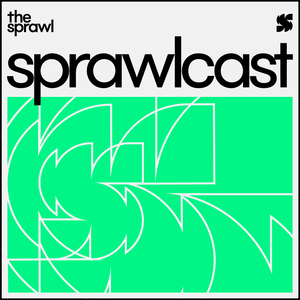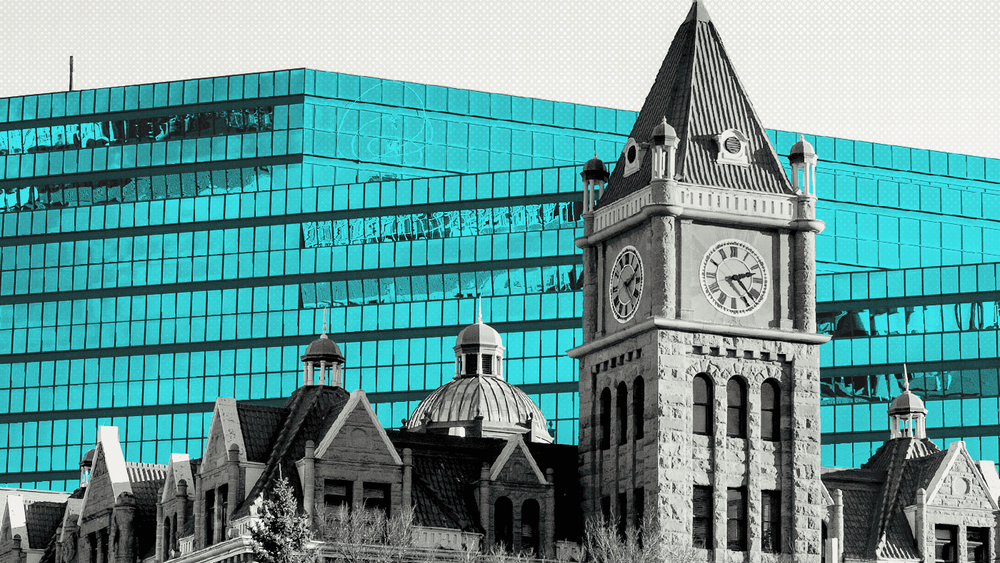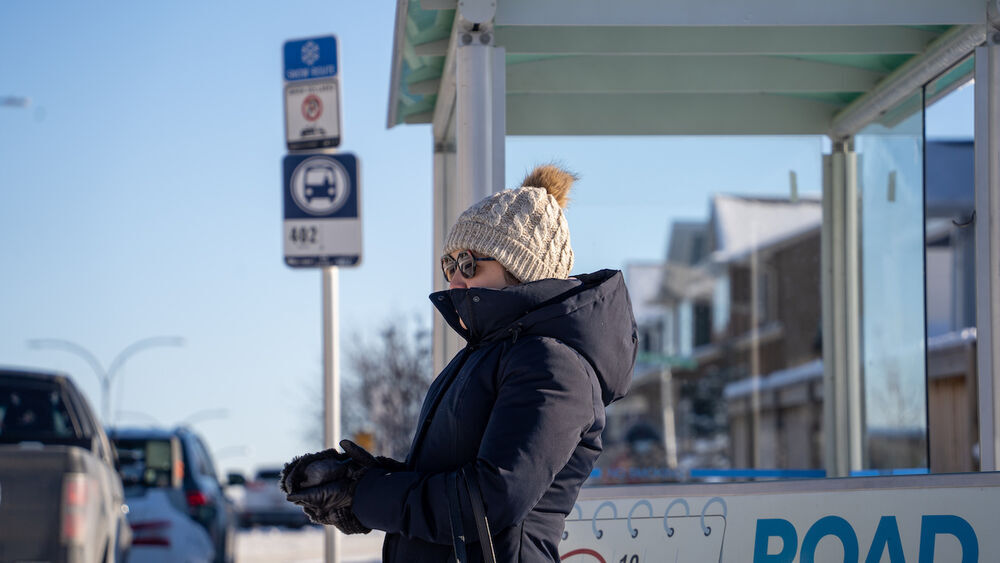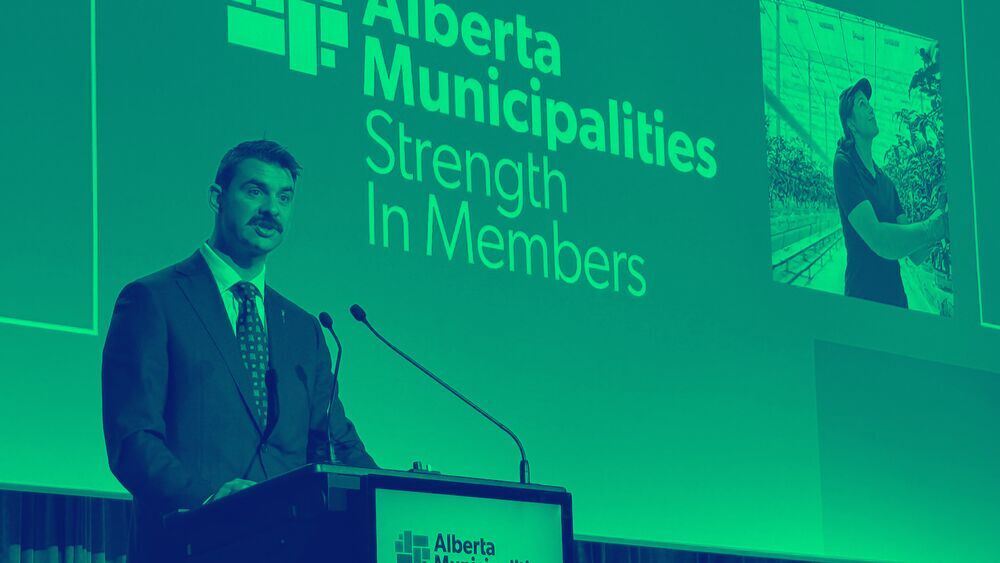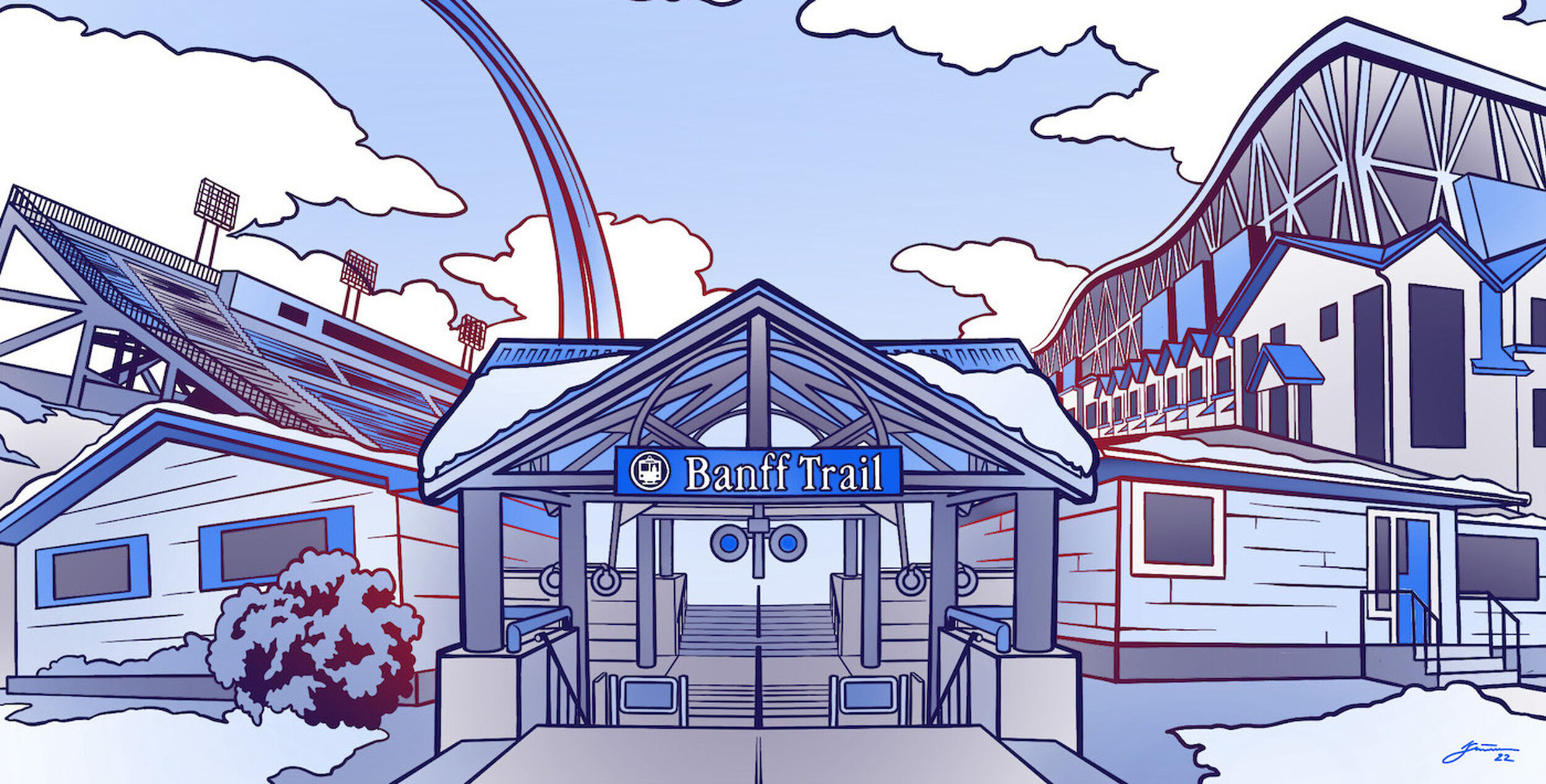
Illustration: Kat Simmers
The battle of Banff Trail
A struggle over transit-oriented development.
Support independent Calgary journalism!
Sign Me Up!The Sprawl connects Calgarians with their city through in-depth, curiosity-driven journalism. But we can't do it alone. If you value our work, support The Sprawl so we can keep digging into municipal issues in Calgary!
Sprawlcast is Calgary’s in-depth municipal podcast. Made in collaboration with CJSW 90.9 FM, it’s a show for curious Calgarians who want more than the daily news grind.
If you value in-depth Calgary journalism, support The Sprawl so we can do more stories like this one!
PAT BOYD: It started as mostly 1950 bungalows. Now there's more infills and stuff like that.
LAURA SHARP: We have collected over 100 signatures on petition from the immediate community, who are in opposition to the proposed increased-density developments.
KERSTIN PLAXTON: If you call somebody a NIMBY, you shut down conversation right away. You're telling somebody, "Your concerns aren't valid."
KATHRYN DAVIES: I think it's really important that this neighbourhood have some diversity of housing choice so that we can have diversity among our residents.
JEREMY KLASZUS (HOST): Imagine if your neighbourhood had its own CTrain station. No, hold that thought—imagine that your neighbourhood had two CTrain stations. Instead of having to drive downtown or to SAIT or to Chinook Centre or places like that, you could just hop on the train and go.
For a lot of us, that’s hard to imagine. The CTrain just doesn’t go where we live. But in this episode of Sprawlcast, we’re going to take a trip to a northwest Calgary community that is unusual in its access to light-rail transit. A place that does have two CTrain stations. And as such, it’s long been viewed as an ideal place for transit-oriented development. Something that city hall has been talking about for decades — but has struggled to actually make happen.
This is a story about one neighbourhood’s struggle over densification. It’s a story about how communities change, and the acrimony that sometimes comes with that.
And this story raises a number of interesting questions. Who speaks for a community? Should planning ideals from the 1950s hold sway decades later? And how does a neighbourhood right on the CTrain line grapple with the pressures of a growing city - at a time when city hall is trying to stop sprawling and shift growth inward, into communities just like this one?
Let’s dig into it.
Who speaks for a community? Should planning ideals from the 1950s hold sway decades later?
The beginnings of Banff Trail
Banff Trail is a neighbourhood that is right in the thick of things. When it was built in the early 1950s as a new subdivision of single-family bungalows, it was pretty well the edge of the city. The suburbs! But today it’s tucked into a busy corner northeast of 16th Avenue and Crowchild Trail. It’s just east of the University of Calgary—which didn’t exist when Banff Trail was built. It’s also close to SAIT, Foothills hospital, Motel Village and McMahon Stadium.
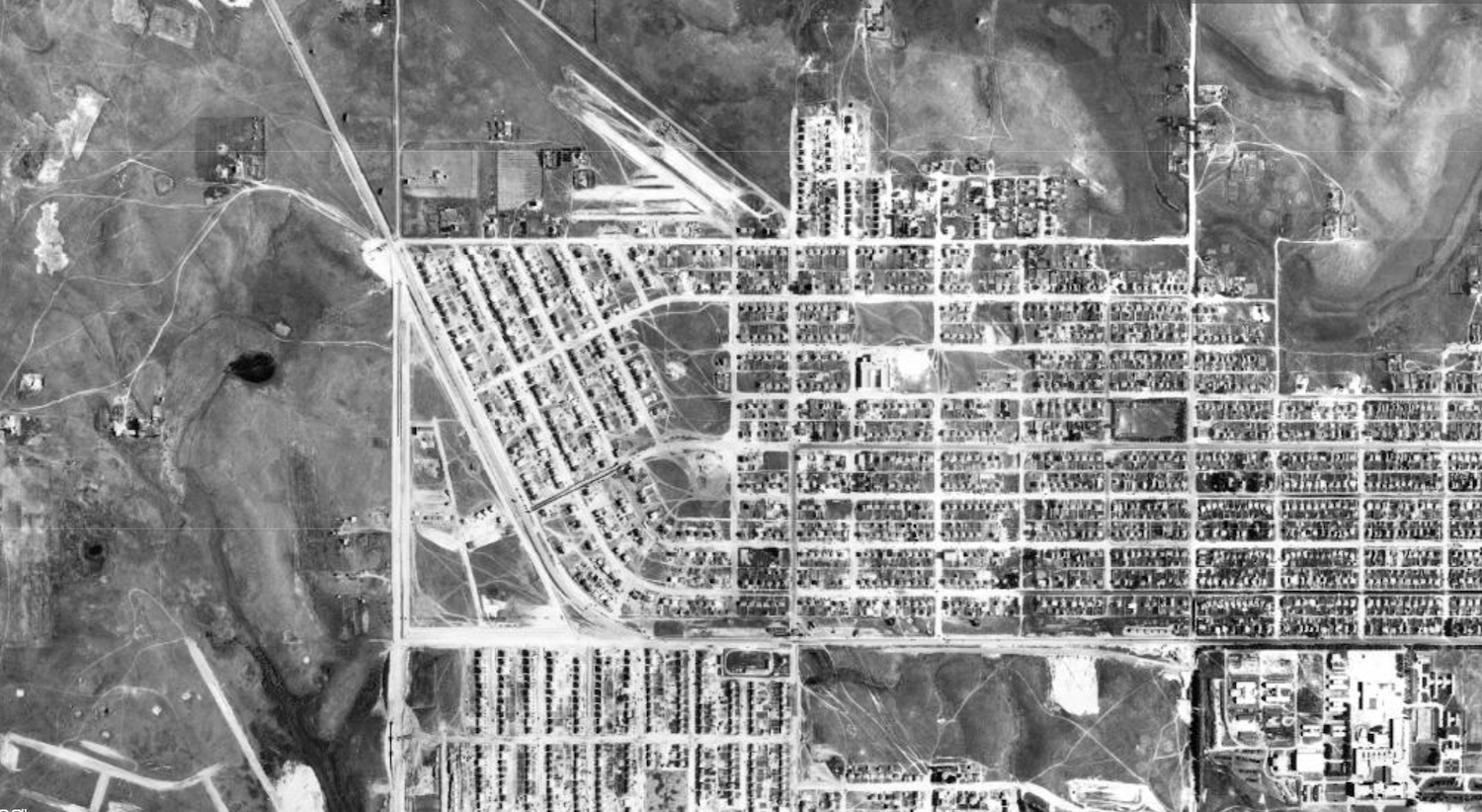
KLASZUS: As you might expect in a neighbourhood with two CTrain stations, people here drive less than the average Calgarian does. In 2016, about one in four people in Banff Trail took public transit to work, compared to just 16% of Calgarians city wide.
The city of Calgary has demographic profiles for each community in the city, using census data from 2016—which is getting rather dated at this point. The city expects to have new profiles with 2021 data next year. But for now we have the 2016 numbers. And the data for Banff Trail gives a good rough sketch of the community.
Here’s a glimpse of the demographics. In 2016, three out of every four Banff Trail residents were white. The median household income was $79,000, which is less than the median citywide income of $97,000. But what really makes Banff Trail distinct is the high number of renters who live here—which makes sense, given its location by post-secondary schools and transit.
In Calgary as a whole, about 30% of households were renting in 2016. Banff Trail was almost double that.
Some of these residents rent in these aging bungalows that were built in the 1950s. Residents like Ryan Morrill. Both Morrill and his wife are doing their PhDs across Crowchild Trail at the University of Calgary.
What really makes Banff Trail distinct is the high number of renters who live here.
RYAN MORRILL: For my undergrad, my master's, I lived in a neighbouring city to where I did university, and it was very long transit. It was about an hour transit every day. So when I moved here to do my PhD, I was like, yeah, no, I'm not doing that again. No matter where I live, it's going to be within walking distance.
KLASZUS: And some renters live in newer multifamily housing—like the townhouses that are starting to pop up in the neighbourhood.
LEAH: Well, we really had to move. We had an emergency at our old place, and it was close to the U of C. And a townhouse is great, because we have a dog, so it's really easy to walk him through the neighbourhood.
KLASZUS: That was Leah, who just moved into the neighbourhood. I also spoke with Rachel Wellwood, another newcomer to Banff Trail who also lives in one of these new townhouses.
RACHEL WELLWOOD: I needed to find a new place to live. This is a rental building. Rentals were really difficult. And so I took this place, one of the first places I could find.
KLASZUS: And how would you describe—I know you've only been here a month and a half, but how would you describe kind of the community feel so far?
WELLWOOD: It's really good. Yeah, people are friendly. I would guess that maybe some people are happy to see new people in the neighbourhood, and some people, maybe not. Because it adds—one new building adds, you know, eight more cars, and eight or more people. So probably some mixed responses.
KLASZUS: And when you moved in, are you conscious of, oh, some people like these higher-density units, and some don't? Is that something you are conscious of?
WELLWOOD: Yeah, I would say so. You can kind of tell when people want to reach out to you and say hello, and, you know, "How's it going, being new in the neighbourhood?" And other people kind of turn and walk away or that sort of thing.
Rentals were really difficult. And so I took this place, one of the first places I could find.
KLASZUS: Rowhouses like the ones Leah and Rachel live in are an example of what’s called “missing middle” housing. The city has a zoning designation specifically for grade-oriented rowhouses. It’s called RCG, and Banff Trail and the neighbourhood to the east, Capitol Hill, account for 25% of all RCG zoning in the city. So there’s a lot of this kind of housing being built around here right now.
Speaking of Capitol Hill — when Banff Trail was originally built in the 1950s, it wasn’t called Banff Trail. At the time it was an extension of Capitol Hill. The street that runs along the train line in Banff Trail is still called Capitol Hill Crescent. And that’s where Pat Boyd moved into a bungalow in 1998.
PAT BOYD: We came here because of the [CTrain] station. It was an easy commute for me to go downtown and work and stuff like that. Also my wife. She worked downtown at the time too.
KLASZUS: And you're literally right across the street from the Banff Trail CTrain station here.
BOYD: Literally, yes. Like, I'd say 50 feet. The best. When I originally moved in, it was just to live. And then we bought the house on the corner lot, and then I started to get dreams thinking, well—you know, being across from the LRT it seemed to me that it would be a natural, given how I enjoyed the area, that it could be, like, an apartment or something that would—you know, I could make some money, of course, and it would suit the needs of.... So naturally, across from the LRT, it just made sense to me, back even then.
KLASZUS: This would have been a six-storey apartment. And Boyd went ahead and hired a developer for the project. This was about five years ago.
BOYD: It would have been a 70-suiter with 70 parking stalls, two or three floors of parking underneath. And, yeah, it would have been 70 more homes, bigger tax base for the city, 70 more families or couples or people or whatever, and parking.
KLASZUS: Boyd thought he was onto something. This was the kind of housing that city hall had been talking about for years.
BOYD: They pretty well say they'd like to see mid-rise apartments here in front of the LRT station. And since then we've taken a crack at it. But the restrictive covenant stopped us dead in the water.
We came here because of the [CTrain] station. It was an easy commute for me to go downtown.
The hidden caveat
KLASZUS: The restrictive covenant. This was a new term to me - I hadn’t heard of this before working on this story. Or, if I had heard it, it didn’t register. But the people of Banff Trail have certainly become familiar with restrictive covenants over the past few years. A restrictive covenant is a caveat that’s registered on a property that stipulates a use that must or must not happen on that property.
TERESA GOLDSTEIN: Restrictive covenants could be anything from, you can't duplicate fencing or take your fencing down, all the way to, you know, you're not allowed to put more than one garage or one home on your parcel.
KLASZUS: This is Teresa Goldstein. She’s an urban planner and a sessional instructor in the U of C’s planning department. And Goldstein previously worked as the manager of community planning for the City of Calgary.
There were many restrictive covenants that were added to parcels that worked very similar to a land-use bylaw.
GOLDSTEIN: As an example, early in my career, I worked for the town of Okotoks, and there was a lot of developer-installed fencing that went in. And the town of Okotoks wanted to ensure that the fencing was maintained, so they registered a restrictive covenant on those lands that were created as part of that subdivision that said that the owners were not allowed to remove the fencing or to duplicate the fencing, as an example. So it's a tool that the city can use in a variety of ways. Way back before we had the land-use bylaws of today, there were many restrictive covenants that were added to parcels that worked very similar to a land-use bylaw.
KLASZUS: When the City of Calgary developed Banff Trail in the early 1950s, city hall put a caveat on this subdivision that said only single or two-family dwellings could be built on these properties. This caveat covers most of the south half of Banff Trail. Nearly 400 homes south of 24th Avenue have this caveat on title.
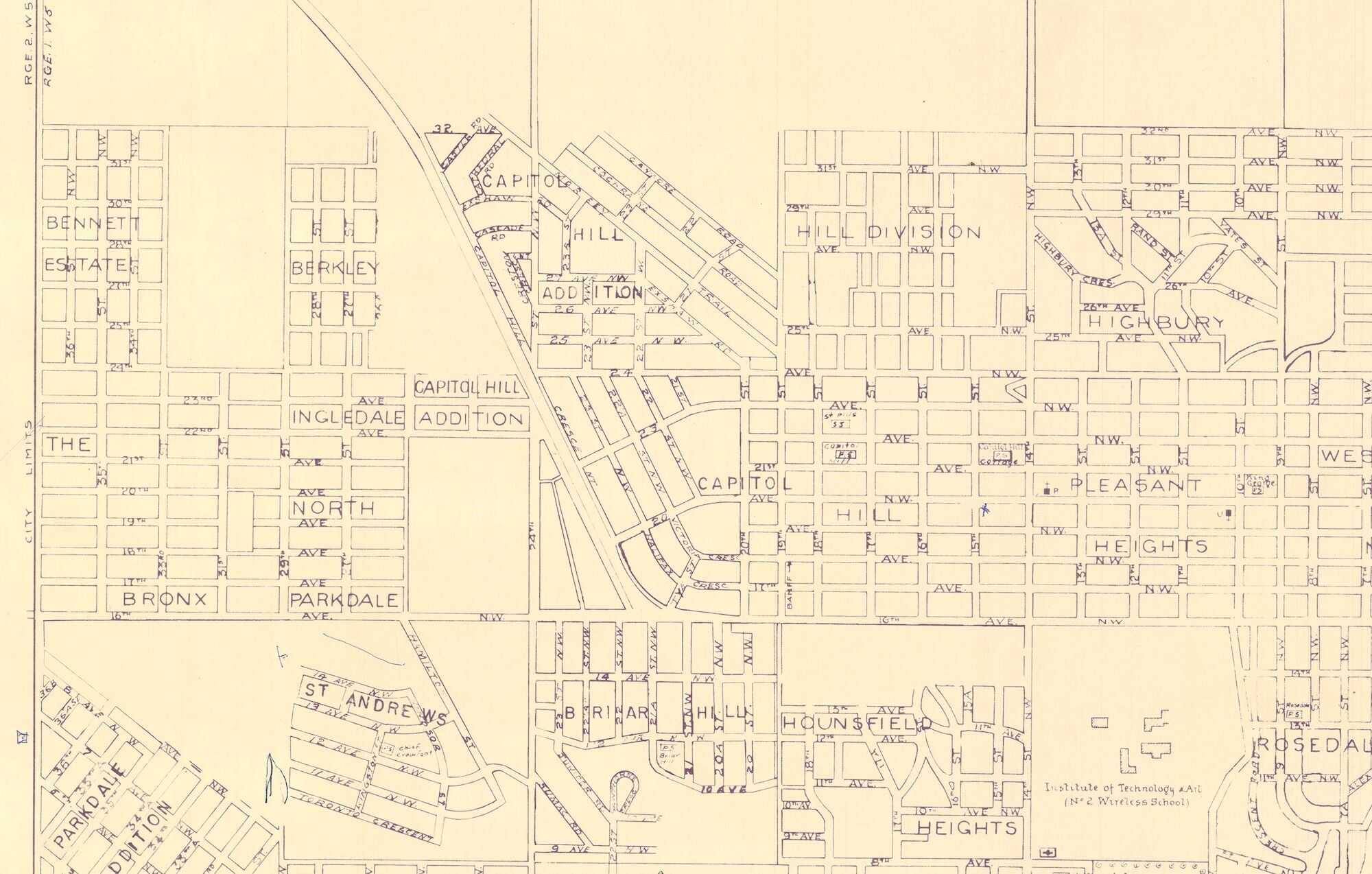
KLASZUS: Banff Trail isn’t unique in this respect. There are restrictive covenants on properties in other established neighbourhoods in Calgary too—places like Britannia, Mayfair and Elbow Park. To further complicate matters, the caveats come from different sources, not just the city. There are properties in Mount Royal, for example, that have restrictive covenants from the Canadian Pacific Railway.
Here’s the other thing to keep in mind. Restrictive covenants can lose their power over time if they’re not enforced. And enforcement isn’t done publicly through city hall public hearings, or the subdivision and development appeal board, or any of the other usual channels residents can use to give input on redevelopment. It’s done through lawsuits in the court system.
Eliot Tretter is an urban geographer at the University of Calgary.
TRETTER: So when you have a case like that, courts would end up being the decider. And, of course, that creates all kinds of other issues about money and who has the power to enforce and et cetera, around them. And so it tends to be that they continue to remain enforced only under certain kinds of conditions in certain areas, as a consequence, because the enforcement of them has to go to those people with resources. So you have very uneven geographies of their enforcement as a consequence of that.
What’s the lifespan of it? And as the city evolves, should that mechanism evolve?
There are people in different Calgary neighbourhoods organizing with each other specifically around the issue of restrictive covenants. Some communities, like Britannia, have a legal fund for restrictive covenants. Elbow Park has had a development sub-committee to work on this issue - and to organize with other community associations in the city to raise awareness and enforce restrictive covenants. The idea of these efforts is to preserve the quote-unquote “character” of these parts of the city—and to stave off unwanted densification.
Eliot Tretter has researched the history of restrictive covenants in cities in the early 20th century.
ELIOT TRETTER: The idea was that these parts of the city which are newly developed have a whole set of rules which will limit or preserve the character or the urban form for many, many, many years. You won't have to worry about what's called "adverse use" or "adverse change." And so people—you hear it all the time, like, "preservation of neighbourhood character," "preservation of neighbourhood type." That was already there. It was very much present 100, 150 years ago.
People talk about commutes and climate emergencies and all that, and we still have difficulty with this private property right that the city imposed on itself.
KLASZUS: Here’s where things get interesting. The Banff Trail restrictive covenant and others like it limit development to single-family homes or duplexes. But city planning policy has obviously changed significantly since the 1950s. And the two are fundamentally at odds.
GOLDSTEIN: That in itself is where I would say the challenge in these existing things lies: what's the lifespan of it? And as the city evolves, should that mechanism evolve? Well, probably, but it doesn't, because it's a static document at the time that it's been registered.
KLASZUS: This situation in Banff Trail is especially bizarre because the city itself placed the caveat. The irony isn’t lost on Pat Boyd. The project he had in mind didn’t go anywhere because of the restrictive covenant.
BOYD: Here we are, we're surrounded by some of the biggest employers, and people talk about commutes and climate emergencies and all that, and we still have difficulty with this private property right that the city imposed on itself.
The enforcement of them has to go to those people with resources. So you have very uneven geographies of their enforcement.
Residents take action in court
KLASZUS: In Banff Trail, this came to a head in 2019 over some proposed redevelopments along and near 24th Avenue NW. Picture this street in your mind. After running eastward along the south end of the U of C campus and crossing Crowchild Trail, it bisects Banff Trail and goes through Capitol Hill until it hits Confederation Park at 14th Street NW. It’s a pretty busy route between Crowchild and 14th, one that I usually take to record this podcast at CJSW. The road recently got new raised bike lanes on both sides of the street, which makes it a little easier to ride a bike there.
And there’s been a lot of contention about multifamily housing being built on and near this street.
DRUH FARRELL: We have a real opportunity by looking at this as a mini main street.
KLASZUS: That’s former area councillor Druh Farrell speaking at a 2019 public hearing. At issue was a corner lot on 24th Avenue. The property was zoned for single family or duplex and now a developer, Flosa Homes, wanted to rezone it for six-storey multifamily housing.
We have a real opportunity by looking at this as a mini main street.
AIDEN KUTCHER: My name is Aiden Kutcher, I'm here on behalf Flosa Homes to talk in favor of the amendment.
Although there are inevitably some residents in the community that would like to maintain the status quo and not see this type of change, the reality is that the city is constantly changing and evolving. Through the hard work of the administration, the community association, and many of the area residents, this property and other surrounding parts of the community have been identified as prime locations for densification.
KLASZUS: And this issue of restrictive covenants came into early focus at this meeting.
It was front and centre because a few weeks earlier, a group of Banff Trail residents had taken legal action against developers to stop this project and others like it. They sought an injunction that would block multifamily housing on several sites in the neighbourhood. And the basis of their lawsuit was the restrictive covenant that the city had placed on Banff Trail in 1952.
Now, the Banff Trail area redevelopment plan says that whenever a restrictive covenant is at odds with the goals of the plan, city hall supports the plan. It takes priority. And one key element of the Banff Trail redevelopment plan is intensifying density at certain spots, particularly near transit stations and corridors like 24th Avenue. So you have these two processes happening at the same time—modern city planning, and the caveat that’s still on title.
Here’s how city solicitor Denise Jakal explained it at that meeting in 2019.
DENISE JAKAL: The land-use planning regime is established by the Municipal Government Act and runs, if you like, in parallel to those common-law rights. Council isn't doing anything wrong or contrary to the law when they consider and assign land uses to any given parcel that is in contravention of that restrictive covenant. They're really two different things.
Sharp and Howse argued that a new rowhouse would affect the enjoyment, use and value of their property.
KLASZUS: The fight over restrictive covenants in Banff Trail was led by Wayne Howse and Laura Sharp, a couple that moved into a newer duplex in the neighbourhood in early 2019. Sharp is a ceramic artist and Howse is an engineer, and their home is one of the many new developments that are replacing those old bungalows in the neighbourhood. It’s just a short walk from the Banff Trail CTrain station.
But a developer planned on building a rowhouse on the corner lot next door - and Sharp and Howse were fighting this, arguing that the new housing would affect the enjoyment, use and value of their property. They also argued that it would change the character of the neighbourhood. When they took their case before the Subdivision and Development Appeal Board in 2019, the board noted that before Howse and Sharp had purchased their home, they had already known about the zoning that permitted rowhousing next door.
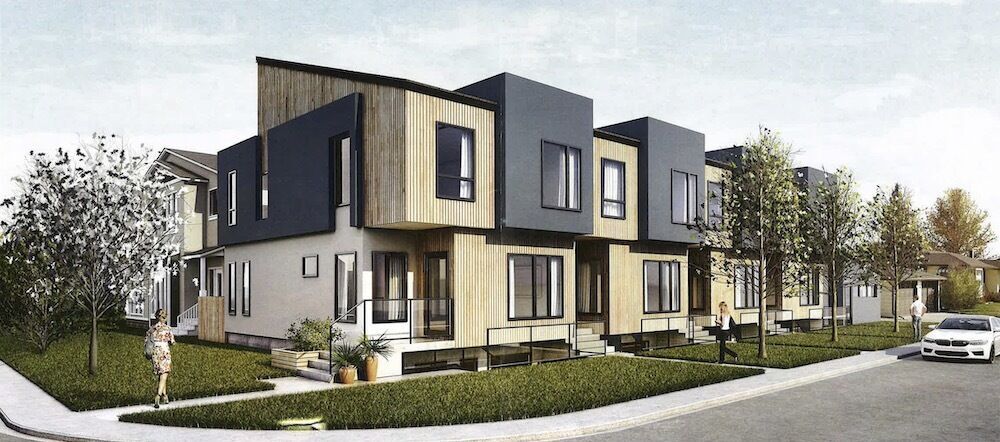
KLASZUS: Sharp and Howse weren’t just fighting the development next door, however. They were leading the court battle to get that injunction. And at that 2019 council meeting, Sharp and Howse spoke out against that six-storey project planned for 24th Ave.
LAURA SHARP: We have collected over 100 signatures on petition from the immediate community, who are in opposition to the proposed increased-density developments.
KLASZUS: Howse and Sharp didn’t respond to interview requests for this story. But at that meeting Sharp brought up the issue of the restrictive covenant on her and Howse’s property.
SHARP: One of the primary concerns for the proposed change of land use is the document on title to it, restrictive covenant number 1358GL, on title. I am a landowner who shares in this legal document, and I would like it noted that I will not be waiving my legal rights in regards to this caveat.
KLASZUS: So Howse and Sharp were hoping to stop development on two fronts: at city hall, and through the courts.
In court, they argued that multifamily housing violates the restrictive covenant. And at city hall, they warned council to be mindful of the lawsuit.
SHARP: The City's continued action in this matter, should they rezone in contravention to caveat 1358GL, would also appear to be proceeding in a way attempting to circumvent the civil legal process, which might appear to be inducement to breach of contract.
KLASZUS: At the time, the Banff Trail Community Association’s planning and development committee was supportive of the land-use change for multifamily housing at the site in question. Especially “given its proximity to two LRT stations and the University of Calgary.” Restrictive covenants weren’t a big issue at the time. But that would soon change.
I would like it noted that I will not be waiving my legal rights in regards to this caveat.
Different visions for 24th Avenue
KLASZUS: In 2020, another batch of land use applications went before council for projects along 24th avenue. These were for mixed-use developments between four and six storeys high. And at this meeting, a number of Banff Trail residents spoke out against the rezonings. You could hear a deep distrust of developers’ plans—and of city hall for continually amending the local area redevelopment plan to allow for taller building heights.
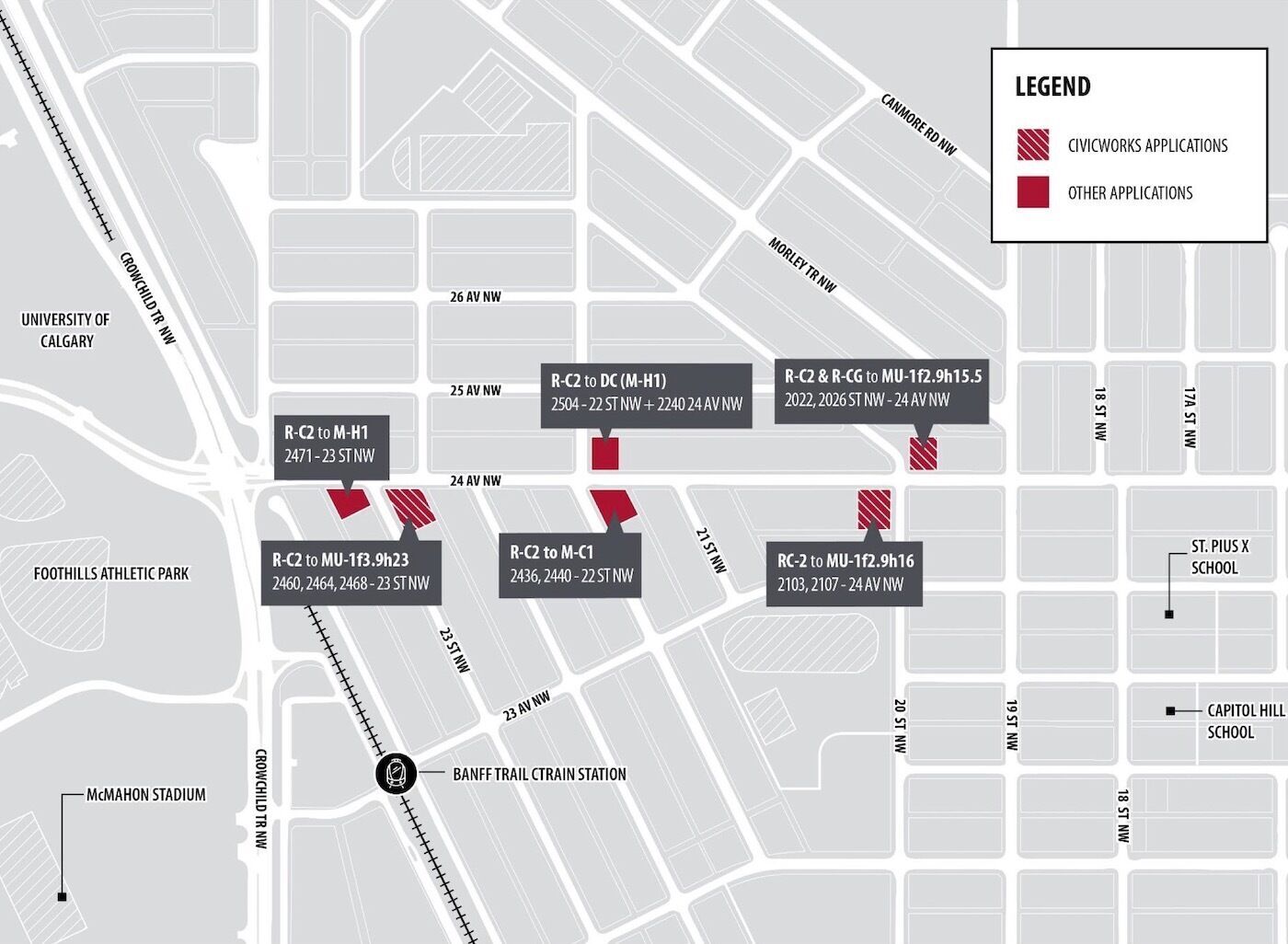
TRACY THOMPSON: There are many residents who are not happy with all the continued land-use amendments.
GINGER ROGERS: I love the feel of Banff Trail right now with the single housing.
JOHN ROWLAND: What I see with these developments is we're getting ad hoc stuff that has just been plopped into the community.
WANDA ROSE: I moved to this community because, A, there was a restrictive covenant on my property, and I thought I was safe from major developments.
KERSTIN PLAXTON: We all understand that development will happen. It is a part of life. I lived in an infill, and now I live in a duplex. Every single person in this room has benefited from development in their neighbourhoods, because we all live in an apartment or a house that at one point wasn't there, right? So we do understand that it is necessary. What we are very concerned about is the process and the lack of engagement with the community.
What I see with these developments is we’re getting ad hoc stuff that has just been plopped into the community.
KLASZUS: Druh Farrell and then-mayor Naheed Nenshi were both in favour of the rezonings—as was the majority of council.
FARRELL: So we have one of the lowest-density communities adjacent to an LRT and right next to one of the largest employment centers in the city. What is before us is an opportunity to meet our own policy objectives, which is transit-oriented development.
KLASZUS: Nenshi talked about city hall’s goal of shifting half of all new growth into established neighbourhoods over the next half-century.
NAHEED NENSHI: Because I start to think about our Municipal Development Plan goals, and I start to think about the fact that we need to build density in existing neighbourhoods in order to meet those goals. And, frankly, if you can't do it here, in a place where the ARP allows for it, where are you going to do it? If you can't do it next to train stations and university on a street where the ARP allows for it, where you're actually spending money making the street better for this kind of development, where are you going to do it?
We need to build density in existing neighbourhoods in order to meet those goals. And, frankly, if you can’t do it here… where are you going to do it?
And so, as much as I understand the concerns of some members of the community about this, I also understand that the city is changing, the community is changing, the university is changing.
KLASZUS: The Banff Trail community association was also changing after a rancorous AGM. Gone was the planning committee that had supported densification. And Wayne Howse and Laura Sharp were now on the board–Howse now led the planning and development committee.
WAYNE HOWSE: We've met with hundreds of people, and we believe that the former comments—that the previous planning and development committee was probably offering comments that were interesting, but I think they were representative of the planning and development committee and not of the community as a whole. As well-meaning as the previous P&D committee was, it was consistently reported to us that their level of engagement was fairly passive.
What is before us is an opportunity to meet our own policy objectives, which is transit-oriented development.
KLASZUS: This change on the board and the planning committee meant a shift in how the community was approaching this issue of redevelopment.
FARRELL: Leading up to this has been a very divisive process. We had a community association board that was very much in favour of this change. They were very much in favour of the Area Redevelopment Plan work and in favour of transit oriented development. Then we saw a change of guard and the current board, some of them it sounds like, they support the lower threshold identified in the Area Redevelopment Plan. We also have a significant component of the community that truly do not want to see development in the neighbourhood—except for singles.
KLASZUS: Shawna Curry lived in the neighbourhood at the time and watched this unfold.
SHAWNA CURRY: This small minority—they’re not afraid to yell. But when it comes time to sit down and have a discussion, they’re totally unwilling to have a meaningful conversation. And I think that’s what we’re seeing in Banff Trail is this very small voice is not representing the community.
We’re preventing young families from moving in the community. We joke you need to be a cardiologist to be able to move into Banff Trail. There’s many students and young families that work at Foothills Hospital or at some of the surrounding University of Calgary campuses that can’t afford to live in Banff Trail. And we’re preventing that evolution of different types of units, different types of price points for people to be able to move into the community. And so those covenants are really stagnating the community.
This small minority — they’re not afraid to yell. But when it comes time to sit down and have a discussion, they’re totally unwilling to have a meaningful conversation.
A 'tool for economic segregation'
KLASZUS: We’re going to continue with the story of what happened with this lawsuit. But first, we’re going to hear from the previous leader of the planning and development committee, Kathryn Davies. I began our conversation by asking her how long she’s lived in Banff Trail and how she’d describe the neighbourhood.
KATHRYN DAVIES: So we've been here for 11 years, I guess. And it's a great neighbourhood. It's maybe not the most glamorous neighbourhood in the city, but I think it's one of the most amenity-rich. So, we've got access to employment nodes, access to great schools, from kindergarten all the way up through post-secondary. We have great friends in the neighbourhood. We have great cycle and walking access to a lot of different things. North Hill Mall, again, not so glamorous, but it's a very functional place to be proximate to. And, of course, Edelweiss.
KLASZUS: And, of course, Edelweiss. I don't know, North Hill Mall has its charms.
DAVIES: Mm-hmm. You know, sometimes you need a very specific board game, and there it is.
KLASZUS: Or a sword. For some reason, I think of the sword place. I've not got a sword, but if I wanted one, I'd go to North Hill Mall.
DAVIES: You could achieve that goal today.
KLASZUS: So this is an interesting neighbourhood, because it has—you know, you live in a bungalow here, and this is historically what's been here. But this neighbourhood is undergoing change, as all of our established neighbourhoods are. And this is kind of a broad question, but how has that unfolded here? How have you seen that unfold here in the time that you've been here?
I was thrilled to see these changes coming. And I think it’s good for the vibrancy of the neighbourhood.
DAVIES: So in the time that I've been here, there's been a lot of infill development, so bungalows being converted to duplexes. And I suspect that when that started, there was probably a bit of grumbling. But for the most part, people just sort of accept that as normal. A lot of the bungalows are in really, really rough shape, so not a lot of tears are shed when they're torn down. And a lot of the infills that they put up are nice.
So within the past decade, the City did an ARP in the area, and it was tied to the area—to the ARP—sorry, that's an Area Redevelopment Plan for Motel Village. So they did one for Motel Village. I'm not sure if you've cycled through there lately. It's not a prime destination, by any stretch of the imagination. But it is considered part of this neighbourhood to some degree, and so they did an ARP here. So I was involved in the planning and development committee through that, and I was on the ARP committee. There was a consultation committee within the neighbourhood. And I was actually surprised at how generally supportive people were of the changes.
Now, some of that came from landlords—you know, there are landlords who have owned a number of properties in the neighbourhood for a lot of years, and I think they saw the dollar signs associated with that. But I think a lot of people are actually enthusiastic about the change and renewal that can come from the neighbourhood. And then I think a lot of people look at the opportunities in the neighbourhood when you have just more people and more housing.
You can get a broader demographic of people. You can get proper student housing, rather than having, you know, eight students living in these converted bungalows. And so I think a lot of people saw a lot of opportunity for here.
If the covenant is allowed to stand, you have a neighbourhood of decaying bungalows that are replaced by very expensive infills.
Me personally, I was thrilled to see these changes coming. And I think it's good for the vibrancy of the neighbourhood. I'm always excited to welcome new neighbours. Obviously, there's opposition. Like, there's always the status quo bias, and I think some people, particularly those who have lived here for a long time, are wary of change, and, you know, the neighbourhood's fine the way it is—why should we be allowing these high-density forms of housing to erode the character, or the fabric, of the neighbourhood? So it's always a mixed bag.
KLASZUS: And how has that played out here? Because that's a tricky thing for communities to navigate. Where you have people coming from different viewpoints, different opinions on development.
DAVIES: So I was involved in the community association until about 2018 or 2019. I'd have to look up the actual date. But around that time—you said that you were on 24th today. So, some multifamily—like, four- or five-, maybe up to six-storey developments have been proposed. And so that raised some eyebrows of people in the neighbourhood. There's a bit of consternation about that. And I think that some people have some really legitimate concerns about that, and some people don't.
And what came out of the woodwork, when these were announced, was this restrictive covenant that is on nearly all the properties in the neighbourhood on the south end of Banff Trail—south half—and it had not come up during the ARP process; it hadn't come up at any point in any of these consultations around changing the zoning of the neighbourhood. So it was a big surprise. But a couple of people in the neighbourhood got wind of this tool. And it's a tool that basically they were able to wield to maybe not stop development, but certainly delay it by several years. So they pounded the pavement, they rounded up a lot of people and had a pretty strong marketing effort, I guess, to get people to rally behind this covenant to try and keep the neighbourhood the way it is.
They pounded the pavement, they rounded up a lot of people and had a pretty strong marketing effort.
KLASZUS: As you've seen this unfold, have you seen people change their minds—like, people who are initially kind of wary or who are skeptical of new developments going in? Have you seen anybody shift positions? Or is it kind of—do people stay where they are?
DAVIES: No, I think people do. And I think when you make a case for this kind of development, and when you address people's concerns, when you address their fears, a lot of people come to see that maybe it's not necessarily something that they want, but maybe not something to fear. And I think—so one of the issues that I have with this restrictive covenant, and restrictive zoning in general, is that restrictive covenants were used for a long time for the explicit purposes of racial segregation. And that's not really a factor at all, I think, in this conversation here. But it certainly is a very effective tool for economic segregation.
So if the covenant is allowed to stand, you have a neighbourhood of decaying bungalows that are replaced by very expensive infills. And as that happens, it becomes a neighbourhood where people, unless you are in a certain income bracket, you just can't afford to live. And my particular issue with that in this neighbourhood is that it's such a strategically valuable area of the city.
This is a neighbourhood where you can live without a car. This is a neighbourhood where you can go to school, you can send your kids to school, you can work at the hospital, you can—you know, it's 16 minutes for me to bike to downtown, the post-secondary institutions are so close. And I just don't feel like this area of the city should be an exclusive neighbourhood. Everyone should be able to live here. I think it's really important that this neighbourhood have some diversity of housing choice so that we can have diversity among our residents.
I just don’t feel like this area of the city should be an exclusive neighbourhood.
KLASZUS: In our conversation, Davies recalled recently taking a course on the psychology of prejudice and bias.
DAVIES: I wrote a paper on anti-renter bias, because we've got a lot of renters, especially in this little corner of the neighbourhood. And we've had such excellent neighbours—and I get a little bit irritated when people start going on about renters. But anyway, I came across a book written by an academic called, I think, Brian McCabe, and he talked about the paradox that one of the most effective ways of bringing a community together is when they unite to keep other people out. And I feel like I saw this in our neighbourhood. A lot of people were really motivated, galvanized, by the idea of maintaining this covenant so that we could keep out the wrong kind of development. And I don't think it was ever said out loud—you know, to keep out the wrong people. But that's often the intentional or unintentional implication of this kind of city building.
KLASZUS: I also asked Davies about the previous planning and development committee - and to respond to Howse’s comment that it didn’t represent the community.
DAVIES: So I think we had a different interpretation of what a community association planning and development committee should be. If you look at the terms of reference of many community associations, or the guidance from the Federation of Calgary Communities, planning and development committees are designed to be arms-length reviewers with a certain level of expertise, a certain familiarity with city policy and planning processes. And they are actually not designed to represent individuals' agendas.
So I remember they approached us and they were like, "Why aren't you fighting for our position?" And I was like, "Well, that's not really the role of this committee." And we had reviewed it—like, the proposals against the ARP and against the letter and the spirit of the policies and the bylaws and deemed it to be aligned with that. And so I would say that you'll never get a planning and development committee that will be representative of everyone in the community, and you'll never be able to achieve that kind of consensus. So we were very careful to be arm's length and to not be driven by anyone's personal agenda.
One of the most effective ways of bringing a community together is when they unite to keep other people out. And I feel like I saw this in our neighbourhood.
A GoFundMe campaign to fight city hall
KLASZUS: I just want to complicate the narrative a bit here. Because both sides of this conflict make the point that Banff Trail is distinct, in part, because so many people who live there are renters. In December of 2021, Laura Sharp started a GoFundMe campaign to cover legal fees for the restrictive covenant fight. And on that page, she makes the point that Banff Trail is home to a lot of renters, people who live in affordable accommodation by the CTrain and the U of C.
And it’s also worth pointing out that some of those renters do find their homes threatened by redevelopment. When an affordable basement suite is knocked down to make way for new townhouses or apartments, a person can’t necessarily hop from one to the other.
When I spoke with Ryan Morrill, who lives in one of the old bungalows, he mentioned the issue of rising rents.
I think if we moved out and then tried to come back, I don’t know if we would, because it’d be too expensive.
MORRILL: My old place that was also very nearby here, what we were paying was significantly—it was very reasonable, and then when we moved out, I think he almost, like, doubled the price. It was insane. I think if we moved out and then tried to come back, I don't know if we would, because it'd be too expensive.
KLASZUS: But Morrill was also welcoming of more housing density in Banff Trail.
MORRILL: I think it's good. There was a lot of people who want to go to the university or people who want to use a train. And I think it's good if there are more places for people to live that are convenient, because I know prices are really going up, and having more availability should hopefully make them more reasonable.
Anyway, Laura Sharp’s GoFundMe campaign is to cover legal fees for this lawsuit over restrictive covenants.
Sharp writes that “the judgment that will be rendered in this matter will set a precedent that will affect development rules in every community in Alberta – and beyond. If the rezoning passed by city council is allowed to prevail, it will create a playbook that will be used time and time again, EVERYWHERE, to trump individual property and contract rights.”
She continues in all-caps: “PLEASE JOIN OUR FIGHT TO ENSURE WE HAVE THE RESOURCES TO STOP CITY HALL FROM TAKING AWAY OUR RIGHTS AND LINING THE POCKETS OF A FEW LARGE AND INFLUENTIAL DEVELOPERS.”
That was posted in December 2021. So far $6,000 has been raised through this GoFundMe; the goal is $50,000.
Earlier that year, some of the folks who were involved in the fight over restrictive covenants in Banff Trail were also organizing to oppose the Guidebook for Great Communities, which was basically a game plan for redevelopment in the city.
The judgment that will be rendered in this matter will set a precedent that will affect development rules in every community in Alberta — and beyond.
CTV NEWS (CHRIS EPP): Wayne Howse says the neighbours in Banff Trail are getting bigger and closer.
KLASZUS: This is a CTV News story by Chris Epp from March 2021.
CTV NEWS (CHRIS EPP): He says more and more large multi-unit buildings are going up, dwarfing the homes beside them, whose owners often didn't know this could happen.
HOWSE: There's four backyards abutting one yard space on this side, so there's a sense in which the neighbours are right there all the time… Most people would consider that it's stable. What you see is what you're going to see for pretty much, you know, the future.
CTV (CHRIS EPP): Howse is one of several community leaders who say the City's new guidebook for planning and development is ignoring the concerns many people have. They say it's too broad and opens the door to potentially too much development in older neighbourhoods.
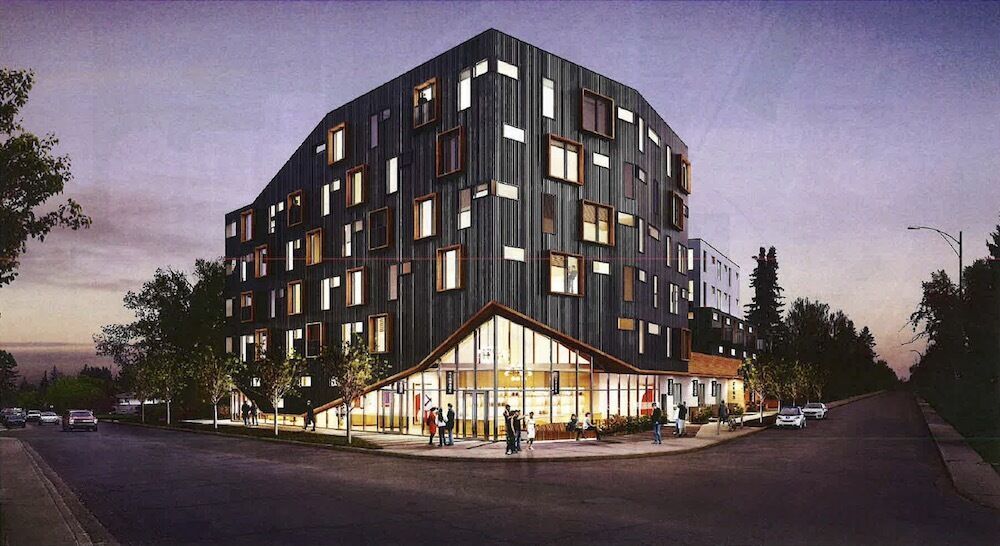
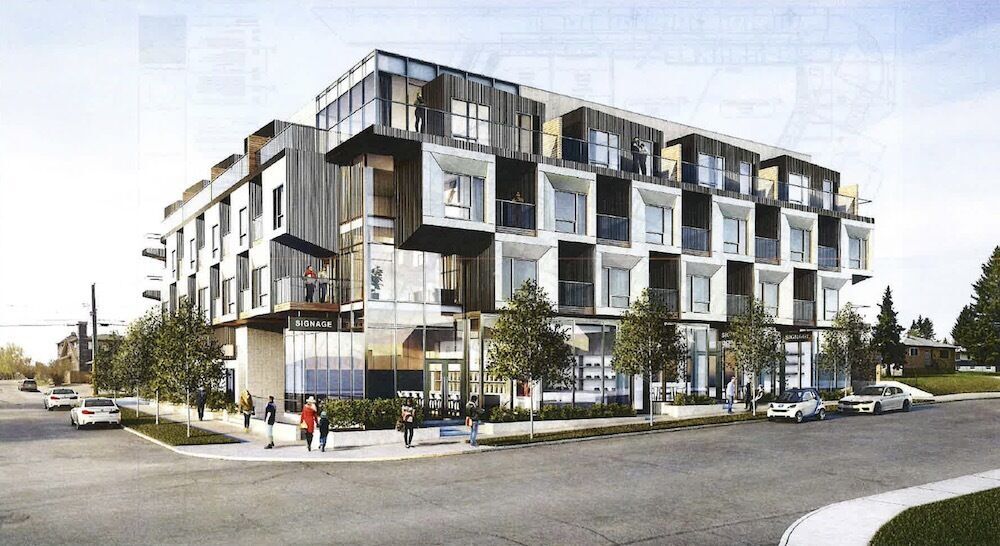
KLASZUS: By now, there was a tangle of lawsuits and counter-suits in Banff Trail involving residents, developers and the City of Calgary. Howse, Sharp and some others were seeking enforcement of the restrictive covenants. Developers wanted the discharge of these covenants on the sites they wanted to build on.
In the summer of 2021, some of these properties in Banff Trail that had already been rezoned for multifamily housing returned to council for yet another rezoning. This included the property next door to Sharp and Howse. This re-re-zoning, let’s call it, put a new density minimum on the sites so that a new single family home or duplex could not be built there. It would have to be multifamily housing. The idea was basically to provide more certainty for developers in light of the pending court case.
And at this 2021 council meeting, Sharp and Howse reiterated their position.
As you are aware, there is active litigation between groups of landowners.
SHARP: I am the neighbour directly to the north of this property, and I'm impacted by the decisions you make today. For a number of reasons, I'm asking you to vote against the application to change land use.
HOWSE: As you are aware, there is active litigation between groups of landowners, including the applicants, regarding a restrictive covenant registered against the land subject to these applications, and several hundred others in the area.
KLASZUS: Howse argued that applicants didn’t need rezoning to proceed.
HOWSE: Rather, what they require is a discharge of the covenants on title. That determination is the exclusive jurisdiction of the Provincial Court of Alberta, not the City of Calgary.
SHARP: If council members decide to go above the limits of their municipal authority, they can become liable for tortious actions to private citizens that are harmed by their inappropriate reach.
Justice Labrenz noted that the core issues were about “substantially different visions for the future of Banff Trail.”
What the courts ultimately decided
KLASZUS: Fast forward to the summer of 2022. By now, enthusiasm for this fight in the community had waned. People who were initially on board were bailing as they got worn down by the acrimony of the situation and the possibility of mounting legal costs. And in August, three years after Wayne Howse filed the initial lawsuit, Court of King’s Bench Justice David Labrenz made a decision on the various Banff Trail court actions.
Justice Labrenz noted that the core issues were about “substantially different visions for the future of Banff Trail.” One group of litigants, he wrote, “desires to maintain the status quo - a neighbourhood comprised primarily of single-family detached homes. Another group of advocates seeks strategic densification of the existing housing.”
Labrenz was to decide on whether the restrictive covenant should be enforced or discharged.
In his decision, Labrenz said the city did not exceed its jurisdiction by rezoning the parcels in question. He ruled that the rezoning bylaws passed by council were lawfully enacted and valid.
Howse and Sharp had argued that the city’s goal of more density could be met elsewhere. But Labrenz said that if someone is applying for discharge of the restrictive covenant, it’s not necessary for them to prove that the development in question can’t be done in any other location.
“In my view,” Justice Labrenz wrote, “imposing such a precondition would effectively grant residents of neighbourhoods with restrictive covenants an effective veto power over development.” This “would create an artificial distinction between development in areas with a decades-old restrictive covenant and those communities that were planned without the use of a restrictive covenant.”
In the end, Labrenz ordered the discharge of the restrictive covenant on the lands in question, saying it’s in the public interest.
Labrenz ordered the discharge of the restrictive covenant on the lands in question, saying it’s in the public interest.
A SW Calgary campaign for a new restrictive covenant
KLASZUS: Sharp and Howse are currently appealing Justice Labrenz’s decision, which means these multifamily housing projects are still in limbo. If you go down 24th Avenue you can see some of the fenced-off lots in question. Meanwhile, people in the community are still walking away from this court battle. The current community association president, for example, was involved earlier on but is not part of the appeal.
There’s a lot riding on this case. People who are hoping to use restrictive covenants to block redevelopment in other neighbourhoods are watching closely. If Justice Labrenz’s decision is upheld, there’s talk of lobbying the Alberta government to change the provincial laws that govern restrictive covenants.
After years of bitter division in the community, there’s a readiness to move on past this fight.
KLASZUS: Meanwhile, some residents of Chinook Park, Kelvin Grove and Eagle Ridge are organizing as we speak. They want to create a new restrictive covenant as a way to stave off multifamily housing in those southwest neighbourhoods. “Restrictive covenants are powerful legal instruments that trump land use bylaws,” says a flyer being distributed around the neighbourhood. Justice Labrenz’s decision would suggest otherwise - but in any case, organizers are hoping to get 90% of households in the area to agree to this, and to put up an initial $500 each toward the legal costs.
So what’s the takeaway from this story?
After years of bitter division in the community, there’s a readiness to move on past this fight. I got that sense from most everyone I spoke to for this story. There’s a new community association board with some of the same faces, but it’s more of a balance between the different perspectives at play in the neighbourhood. And some residents have changed their positions over the years.
Kerstin Plaxton is one of the residents who was initially involved in the lawsuit over restrictive covenants in Banff Trail.
PLAXTON: So looking back at it now, would I do it again? Probably not. Did I think it was the right decision to join—back in 2019, I believe? It seems like a long time ago. It was. I thought I was doing something good for the community. I had made my decision after talking to a lot of people. I've talked to a lot of seniors who didn't quite understand what was going on, and I thought that I was supporting them with what I could do, what was in my power.
And then what I've also learned over the process is that Calgarians that have restrictive covenants on their titles often feel that it's the only tool they have to say, "You need to take me seriously. This isn't okay. This isn't working. You're not listening to me. So I have to take the step.” Is it an effective tool? I don't think it is. I think there needs to be a better way to get city council and city officials to listen to residents.
I’ve talked to a lot of seniors who didn’t quite understand what was going on, and I thought that I was supporting them with what I could do.
KLASZUS: Plaxton says she has a lot of compassion for people who feel unheard and belittled by city hall—because she’s experienced that herself.
PLAXTON: Engaging kind of puts you in this corner where people look at you like you don't care about the community, you don't care about the city, you only care about yourself. You know, it brings us back to the term of being a NIMBY. And really what it did, which I think is really sad—it did put a strain on the community for a long time, where people were either for it or against it. They were upholding it, or they were for letting it go, or—you know, not even the whole community has it on their titles. So in that sense it's really hard to navigate. Because whatever you do, whatever your decision is, it shouldn't divide the community.
It's kind of come in the way of some friendships that I'm happy are being rekindled now. And once we all started talking again, it kind of turned out that we were really not that far apart in how we see this community developing, how we see the need for development, the need for updates to infrastructure and making it more walkable, making it great for the kids. I mean, if you go down 20th, there's a lot of rowhouses here now. They're just fine, they're great, they fit right in. I'm hoping it'll be great neighbours coming, more trick or treating for the kids, right, which is a great thing for them.
I think there needs to be a better way to get city council and city officials to listen to residents.
KLASZUS: Plaxton also made an interesting point about how city hall’s processes can put people on the defensive right away, rather than encouraging nuanced conversation.
PLAXTON: So if you go to a council meeting and development is presented, the wording is—first you step forward if you're in favor, then you step forward if you're in opposition. So right away you have this language that divides people, puts you in two camps where you shouldn't be. Because I was like, well—I'm not for, and I'm not against. I have some concerns. Where do I go? Do I go here or do I go there? So to me, let's start with getting away with that and saying, step forward if you would like to make a comment or if you would like to tell us how you feel about this. And then just, you know, take it seriously.
Once we all started talking again, it kind of turned out that we were really not that far apart in how we see this community developing.
KLASZUS: I asked the area councillor, Terry Wong, about this, and he emphasized the importance of trust when it comes to densifying established neighbourhoods — saying the city could do a better job of communicating with the public to build that trust.
WONG: Nine times out of ten—I hate to say it—we don't do an effective job. Or the job is so comprehensive, so complex that the public don't think that their issues have been resolved but they're being told public policy statements. The second part of the equation is the public themselves. They need to understand that things do evolve, things do change, and the rights of individuals, not just themselves, are just as important. So if a neighbour across the street wants to do something, they have to respect that the neighbour has the right to do that.
Then thirdly industry themselves. There's always a business motivation to everything they do, whether it be a profit orientation, or building a client base developing the strength of their industry and everything else. But again, they can’t do this in absence of the municipal policies as well as the city property owners, the taxpayers. So, trust all way around all three, with all three, is what's extremely important.
Nine times out of ten — I hate to say it — we don’t do an effective job.
KLASZUS: I also asked Kathryn Davies what her takeaway is from this situation in Banff Trail.
DAVIES: I think the biggest takeaway is that our system is just so fundamentally broken. And I think that what you see in Banff Trail, you see throughout the City of Calgary, you see throughout communities in—throughout North America. I mean, you look at a lot of the housing politics happening in California or Minnesota or Washington state, and it's just the same thing over and over again. And I think we just fundamentally need to rethink how much—what's the term?—how much control existing residents should have over long-term decisions about housing in their communities.
I think we need to examine some of the biases that underline this kind of activity. Like, why is it that we're so scared of multi-family housing? We need to talk about why we have this idea that people in single-family homes cannot live anywhere proximate to people in any other form of dwelling.
Jeremy Klaszus is editor-in-chief of The Sprawl.
Support independent Calgary journalism!
Sign Me Up!The Sprawl connects Calgarians with their city through in-depth, curiosity-driven journalism. But we can't do it alone. If you value our work, support The Sprawl so we can keep digging into municipal issues in Calgary!
